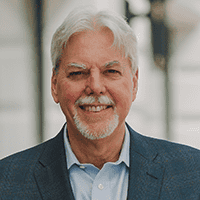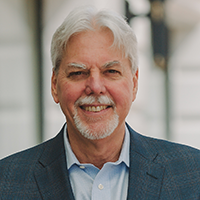
The Chemistry of Success
If service as a bank director is supposed to be a cushy sinecure, then someone forgot to tell the seven board members at CVB Financial Corp., a $7.4 billion asset bank headquartered in Ontario, California. The CVB board and its various committees all meet on the same day once a month, and a typical agenda would look something like this: Committee meetings in the morning, followed by a meeting of the full board in the afternoon, followed by an executive session of the independent directors to wrap things up. President and Chief Executive Officer Chris Myers says that CVB directors on average put in a 10-hour day when they get together.
Not only that, but the Friday prior to this marathon series of meetings, Myers and his senior management team schedule a three-hour briefing for the board on the CVB’s operating performance and every other important development that has happened at the bank since the board last met. That adds significantly to what is already a considerable time commitment for the bank’s directors, but the meetings are well attended-and, Myers adds, highly beneficial.
“Everybody is on the same page,” he says. “When you walk out of that pre-board meeting, you know exactly what’s going on and what the big issues in the bank are. If you really want to learn how CVB operates you go to the pre-board meeting.”
It just so happened that CVB was one of the top performing U.S. banks from 2011 to 2013 and it’s reasonable to ask whether there is a positive correlation between the company’s consistently strong financial results and the personal commitment of its board of directors, evidenced by how much time they are willing to invest. Do the boards at high performing banks like CVB do things differently than most other banks, and is that a significant factor in their success?
In the 30-plus years that I have covered the financial services industry, I have always found it difficult to measure the effectiveness of corporate boards. The very nature of how most boards operate makes it difficult to draw a clean and visible connection between what they do and how their companies perform. Most boards do their jobs pretty much the same way. They meet on a regular basis and go through a pre-determined agenda. The directors talk about things, make some decisions and go off to their other endeavors. Directors oversee rather than manage, and oversight is by nature a more passive and nuanced role.
Understanding a corporate board’s effectiveness is further complicated by the fact that most boards operate behind a veil of impenetrability that shields them from the prying eyes of journalists, financial analysts and investors. The full scope of a board’s deliberations is rarely made public and even meeting minutes, if made available for inspection, would offer little more than a dry recitation of what was discussed and decided. The veil has been raised somewhat by events of the last several decades, including a greater demand for independence on public company boards, a result of both the 12-year-old Sarbanes-Oxley Act and persistent shareholder activism over a period of many years. Regulatory agencies have also required greater accountability from bank boards since the financial crisis. Still, while corporate boards are now subject to a higher level of scrutiny than was once the case, it is difficult for most outsiders to evaluate exactly how a corporate board contributes to its company’s success because even today they tend to operate with the protective confidentiality of a privy council.
Corporate advisors who work with boards regularly can cite a variety of characteristics and practices that can have a positive impact on a bank’s financial performance. John Eggemeyer, founder and managing principal at Castle Creek Capital, a private equity firm in Rancho Santa Fe, California, sits on several boards at community banks where he is an investor. Asked how boards can help drive the financial performance of their institutions, Eggemeyer offers three points, beginning with a “shared vision” between management, the board and investors. “It needs to be well understood and personally embraced,” he says.
A second point is accountability for the management team when it comes to the attainment of performance goals. “There needs to be rewards for achieving them and consequences for not achieving them,” he continues.
And finally, the directors have to bring a high level of personal integrity to their board service. “Do my directors come prepared?” says Eggemeyer. “How do they deal with each other and management?”
It’s also important that boards have a culture of openness. “You need to create an atmosphere where questions can be fully asked and answered,” says James McAlpin, a partner at Bryan Cave LLP in Atlanta and head of the law firm’s financial services client services group. “To me, ‘Why?’ is a very provocative question.” McAlpin also says that the board’s primary role is to hire a skilled CEO who can deliver results. “Boards need to hire the best CEO and hold them to a performance standard,” he says. “I don’t care how good your board is, if you don’t have the right CEO the bank won’t be successful.”
It’s also crucial that boards be willing to stand up to a management team that probably knows more about banking than most directors. The can be very difficult for some directors, especially if it was the CEO who invited them to join the board in the first place. But two very important constituency groups-institutional investors and the bank regulatory agencies-expect that management works for the board and not the other way around. “You don’t want a director who’s going to be afraid of management,” says one former bank CEO who did not want to be quoted by name. “They’ve got to be able to stand toe to toe with the CEO. They’ve got to be able to say, ‘I’m not buying that. I don’t agree with that.’ Directors need to be able to think for themselves.”
Of course, good corporate governance isn’t the only factor that can drive a bank’s performance. Is the bank located in a great market? Has it followed McAlpin’s advice and hired a talented CEO, and is that CEO backed up by a highly competent senior management team? Does the bank have a unique business model that enables it to out-perform most other institutions?
All these factors are indeed instrumental to a bank board’s performance. But do the boards at high performing banks like CVB also contribute to their companies’ success by doing things differently than most other boards?
To answer this question I decided to examine the board practices of a small group of banks that have scored well on Bank Director’s Bank Performance Scorecard, which is an annual ranking of the largest publicly owned banks and thrifts in the country. The Scorecard, which is published in our third quarter issue, is comprised of five metrics across three categories-profitability, capitalization and asset quality. The banks are then ranked in three separate asset categories. The Scorecard favors banks that are well balanced across all three performance categories rather than those that dominate a single category. The investment banking firm Sandler O’Neill + Partners LP prepares the ranking using data provided to it by SNL Financial LC.
I selected four banks from the top performers of this list, representing a range of sizes, geographical locations and business models, and interviewed the CEOs and chairmen, or if the CEO also held the title of chairman, the lead director at each institution. First Financial Bankshares Inc., a $5.8 billion asset bank in Abilene, Texas, has a commercial banking model focused exclusively on the Texas market. First Financial finished first in the $5 billion to $50 billion category in 2014, and third and second in 2013 and 2012, respectively, in the $1 billion to $5 billion category. The bank has a nine person board with Scott Dueser serving as chairman and CEO, and Abilene businessman Tucker Bridwell as the board’s lead director.
Intensely focused on businesses in Central and Southern California, CVB finished fourth on the Scorecard in 2014, eighth in 2013 and sixth in 2012, all in the $5 billion to $50 billion category. Raymond O’Brien, a one-time banker who is now CEO of a manufacturing company located in the Greater Los Angeles area, serves as its independent chairman. With just seven directors, CVB has the smallest board of the four banks.
With $66.3 billion in assets, Columbus, Ohio-based Huntington Bancshares Inc. is the largest institution I looked at. It has a diversified regional banking model and operates in six states stretching from Pennsylvania to Michigan, and finished fifth in 2014, first in 2013 and second in 2012 in the $50 billion and above category. Huntington has a 12 person board with Stephen Steinour serving as chairman and CEO and David Porteous, a corporate attorney from Michigan, serving as the board’s lead director.
The final bank I looked at was $27.3 billion asset Signature Bank, which is located in New York and focuses on privately-owned businesses and their owners. Signature ranked seventh in the Scorecard’s $5 billion to $50 billion category in 2014, and fifth in 2013 and 2012. The bank has a nine person board with Joseph DePaolo serving as president and CEO and Scott Shay as the board’s executive chairman. Unlike the other boards, where the only inside directors are the CEOs, Signature has three insiders including DePaolo and Shay, all of whom helped found the company in 2001.
As I shifted through my interviews with the CEOs, chairmen and lead directors at these four banks, which were extensive and wide ranging, it became apparent that each board has a remarkably similar chemistry in terms of how it operates. And if we think of boards as having a kind of governance DNA, then here are 10 identifiable traits that set these four banks apart from most other institutions.
Strong Boards with Highly Capable Directors
This might seem like an obvious point, but all of these boards have been put together with a group of directors who bring a wealth of experience to the task. Think of this as table stakes for any board that wants to be really good.
For example, Signature’s board has two prominent former elected officials-U.S. Senator Al D’Amato and New York Lt. Governor Al DelBello-both of whom have had successful business careers since leaving elected office. (D’Amato is a Republican and DelBello a Democrat, so it’s a balanced ticket so to speak.) Having two well-connected former politicians makes sense given Signature’s private banking strategy, where who you know is as important as what you know.
Based in West Texas, First Financial has on its board a rancher, a livestock investor, two individuals with backgrounds in oil and gas and the CEO of a local hospital system. Ranching, oil and gas and health care are important businesses in West Texas, and the board has directors who understand them. The same dynamic exists at CVB and Huntington, where the directors understand the banks’ businesses and communities, or bring specialized knowledge like technology or payments to the board.
The directors at all four banks bring something else to the boardroom table-a willingness to speak up and express their opinions. “What is important on our board is that each director has a strong background, that none of them are shrinking violets, that each of them brings to bear their substantial knowledge and are not afraid to speak up and say what they think,” says Shay, the bank’s chairman.
Adds DePaolo, “If they think we’re doing a loan that we shouldn’t do, or getting into a business line we shouldn’t be in, they’d have no problems telling us that it would be hard to support.”
Deep Knowledge About the Bank
One of the CVB board’s strengths is how well it understands the bank’s businesses and operating performance thanks to the half-day briefings that CEO Myers and his management team provide to directors prior to every board meeting. It is simply not possible to be an effective director if you don’t understand the inner workings of your own company. Only a handful of directors at the four banks have a background in financial services, and yet all of the boards seem to have a firm grasp of strategy, risks, operational issues and financial performance. “If the board is going to help, it has to have insight,” says CVB Chairman O’Brien. “To have insight you’ve got to spend some extra time.”
Huntington CEO Steinour took his board through an extensive five-year planning process last year, beginning with several directors participating in interviews with prospective consulting firms to select one firm to help manage the process. Steinour kept the board actively engaged in developing the new five-year plan. “There was an enormous amount of involvement and effort on their part,” he says. “It took seven months and there were multiple extra meetings and probably dozens of [individual meetings] with many of the directors. I think we came out with a much better set of conclusions. It was very valuable.”
The advantage to the Huntington board is that having been so deeply involved in its formulation, the directors have a thorough understanding of the bank’s strategy.
Transparency
There can’t be any secrets between a board and the bank’s senior management team. Everything has to be out on the table. Everything that needs to be known must be known. A board can’t be strong and effective if there isn’t a high level of trust between the directors and the CEO. Trust is the glue that binds a board together, and I believe it begins with transparency.
Steinour has a policy of allowing any board member to talk to anyone in the company if they have a question. “Our directors have access to anyone in the company anytime,” Steinour says. “No one clears a call through me. I don’t want it and don’t expect it. I want them to go direct.”
Porteous says that transparency is central to how Steinour manages the board. “Steve does not manage or control information,” Porteous says. “He’s very forthright, very transparent, and as a result we have these great discussions at the board level that are very helpful to Steve and his leadership team as well as the board.”
Personal Commitment to the Bank’s Success
The commitment that the directors at all four boards bring to the governance process is evident when you look at how hard they work. Both Bridwell and Porteous say their respective directors typically participate in 60 meetings a year or more when all of the board and committee meetings, as well as conference calls, are tallied up. But personal commitment means more than just the amount of time a director is willing to spend sitting in meetings. It also requires that they actively engage in the governance process by asking questions, offering their perspective and pushing back when they don’t agree with something.
Bridwell says that First Financial directors are paid relatively modestly compared to how much of their time they give the board. “The most that any of us make, and it varies because of committees, is probably $35,000 to $40,000 a year,” he says. “I’m on two public [company] boards that pay between $200,000 and $300,000 a year. We’re doing this because we love the bank more than we’re going to be enriched.”
Talented CEO Who Engages the Board
I don’t think that anyone one would argue that one of the most important factors in a company’s financial performance is having a strong management team headed up by a talented CEO. But just having a highly effective CEO is not enough, otherwise the board wouldn’t matter and the CEO could go it alone. CEOs who are self-aware enough to know they need the advice and counsel of an experienced board-and are willing to engage with their boards-are much more likely to be successful than the lone wolves who think they can do it alone.
Porteous credits Steinour with putting in a great deal of effort to communicate with individual directors on the Huntington board. “His leadership style is one that requires a lot more work and a lot more effort,” says Porteous. “And I think if a leader is willing to do that, even though it takes extra time and effort, the benefit to the organization, both short term and long term, is extraordinary.”
The Board Understands its Role
One of the possible downsides of a well-informed board that has a deep understanding of the bank and its businesses is a possible tendency to micromanage. Directors need to have a sophisticated understanding of the bank, but smart boards allow their management teams to run the institution and hold them accountable for the results. Both Myers and Dueser said they have had to push back occasionally when they thought their boards were getting a little too involved in operational issues. Still, the CVB board seems to have a good view of its role. Its job is to review the data, understand all the dynamics of the bank’s performance and ask good questions. Myers runs the bank and the board’s job is to provide oversight and not interfere with his decisions.
“Our job is not to solve problems,” says O’Brien. “Our job is to figure out if we’ve addressed the problem as thoroughly as possible. If you’re not feeling like it’s your job to solve every problem, then you’re going to stay under control, in my opinion. Our job is to just raise issues to the forefront, bring them to Chris, and then figure out if management has done a good job of attacking them.”
Trust Between the CEO and the Board
Trust is the foundation that a healthy and productive board/CEO relationship is built on. If the board and CEO don’t trust each other, the governance culture is damaged. The board needs to know that it has a complete picture of the bank’s financial and operating condition, and that management isn’t engaging in selective non-disclosures by withholding information that might cast it in a negative light. And a CEO needs to know that the board understands its role and wants to be a resource instead of a roadblock.
“The biggest thing that we bring to Chris is being a sounding board for him,” says O’Brien. “He gets to think out loud. Being a CEO is, in my opinion, a very lonely job. There aren’t a lot of CEOs. There are a lot of EVPs. There are a lot of SVPs. There aren’t a lot of CEOs. And if you’re a good CEO, you understand that the buck stops with you, and Chris understands that as well.”
Shared Sense of Accountability
I don’t mean accountability in an authoritarian sense. Instead, it is the commitment that the CEO and the board make to each other to engage in the governance process and make it work. At CVB, Myers knows he is accountable to the board for his performance and the financial results of the company. But he also invests an enormous amount of time in briefing the board on the operations and performance of the company. And the board invests an equal amount of time in digesting that information and providing him with the best guidance. I saw evidence of the same dynamic in play at First Financial, Huntington and Signature, where the CEOs and boards understand that they are equally responsible in making the governance process work.
“We hold each other accountable, but it’s done in a collaborative manner, and it’s done with respect for whose role is what in the organization,” says O’Brien.
Board and Management are Aligned
Alignment occurs when the CEO and board are in hot pursuit of a common goal that everyone supports. The CEO and boards at all four banks are united on their strategies and financial objectives, which is probably the result of the open communication that routinely occurs between them. Achieving alignment can take time since all four boards are filled with strong willed, Type A personalities. But a consensus is eventually achieved, which is something that Dueser at First Financial places a great deal of importance on.
“Your board can have a lively discussion, and I think [that] is good, [to] have difference of opinion,” he says. “But after it’s all heard there needs to be a consensus on where you’re going. They get there-they do have their discussion, and they do have their differences-but then they come down and say, ‘This is where we’re going.’”
High Expectations for Success
This is probably the one characteristic that all four banks had the most in common. Each board, and each CEO, expects to be successful. It’s just that simple. None of the people I interviewed came across as arrogant or overly confident. Confident, yes, but it’s a confidence that comes from hard work and hard-earned success. All of these banks expect to be successful, and that expectation-when it becomes part of the board and management culture-creates a self-fulfilling prophesy.
Dueser put it this way: “Excellence is discussed. Anything lower than excellence is not discussed. We never compare ourselves with any type of peer group that isn’t the top peer group.”
It would be almost impossible to identify which of these 10 DNA chromosomes I thought was most important, but if forced I would probably choose personal commitment since the collective passion that a board brings to the governance process can be the difference between being merely good, and being great.
For example, most governance experts would argue that having only one inside director on the board, which would normally be the CEO, is a best practice. But Signature’s three inside directors, including Shay and DePaolo, were founders of the company in 2001 when a group of senior executives at the old Republic National Bank in New York left to form their own company. Not only are these insiders significant investors in the company, which aligns their interests with the bank’s other shareholders, they were the creators of Signature’s unique operating strategy and culture-which are two factors that have helped drive the company’s success-and they bring that awareness to the board as well. I think this insider knowledge is the Signature board’s unique strength.
“I think I can speak for all three of the founders who are on the board that we live, breathe, eat-and if you checked our blood type it would come out as Signature,” says Shay.
And if that’s not commitment, what is?

Join OUr Community
Bank Director’s annual Bank Services Membership Program combines Bank Director’s extensive online library of director training materials, conferences, our quarterly publication, and access to FinXTech Connect.
Become a Member
Our commitment to those leaders who believe a strong board makes a strong bank never wavers.



